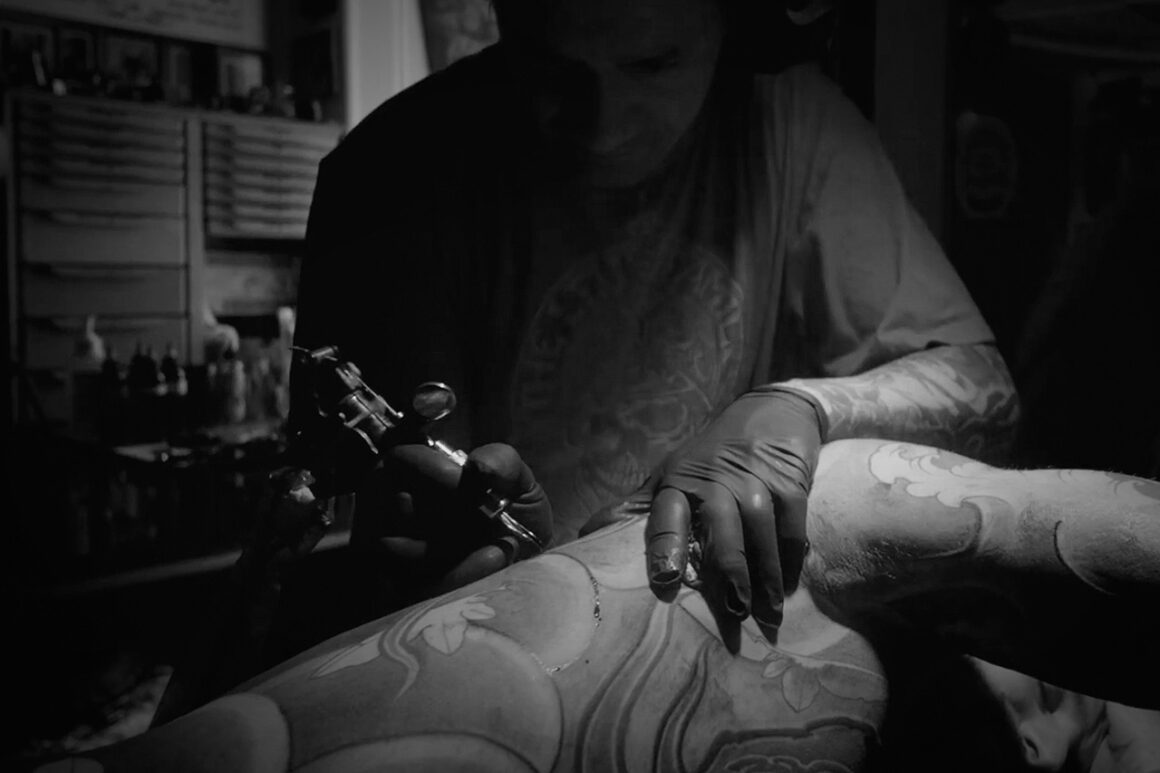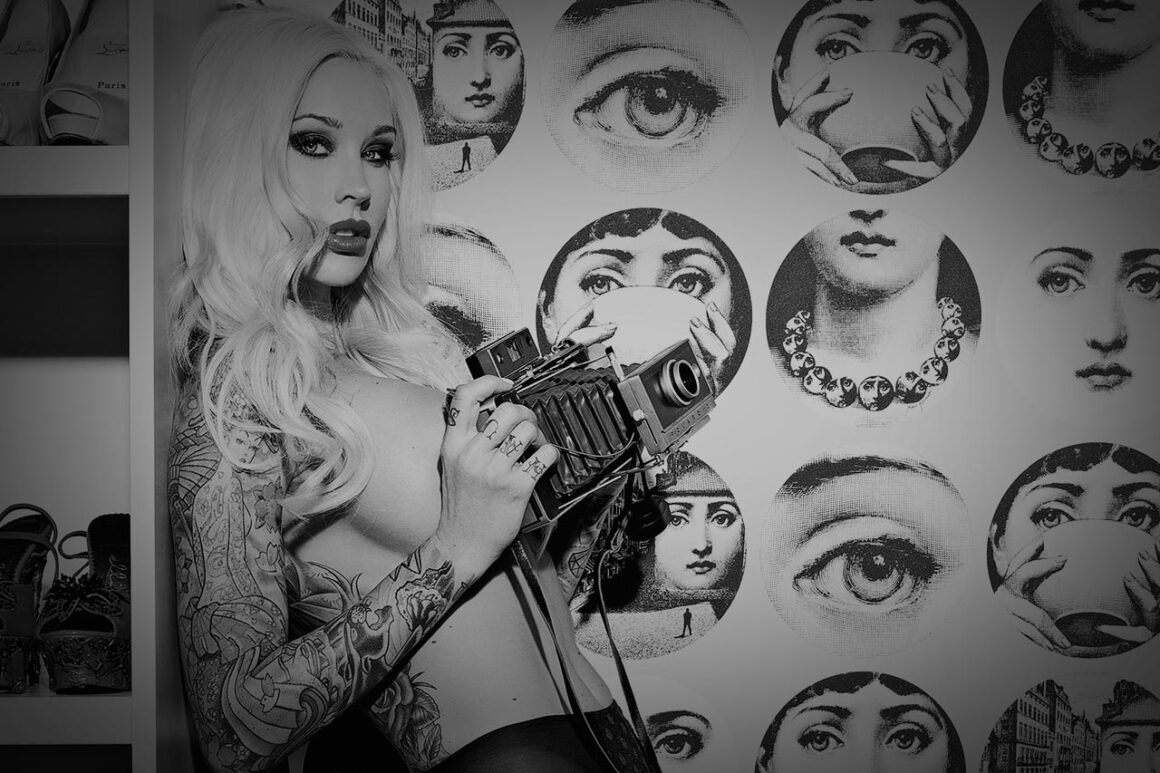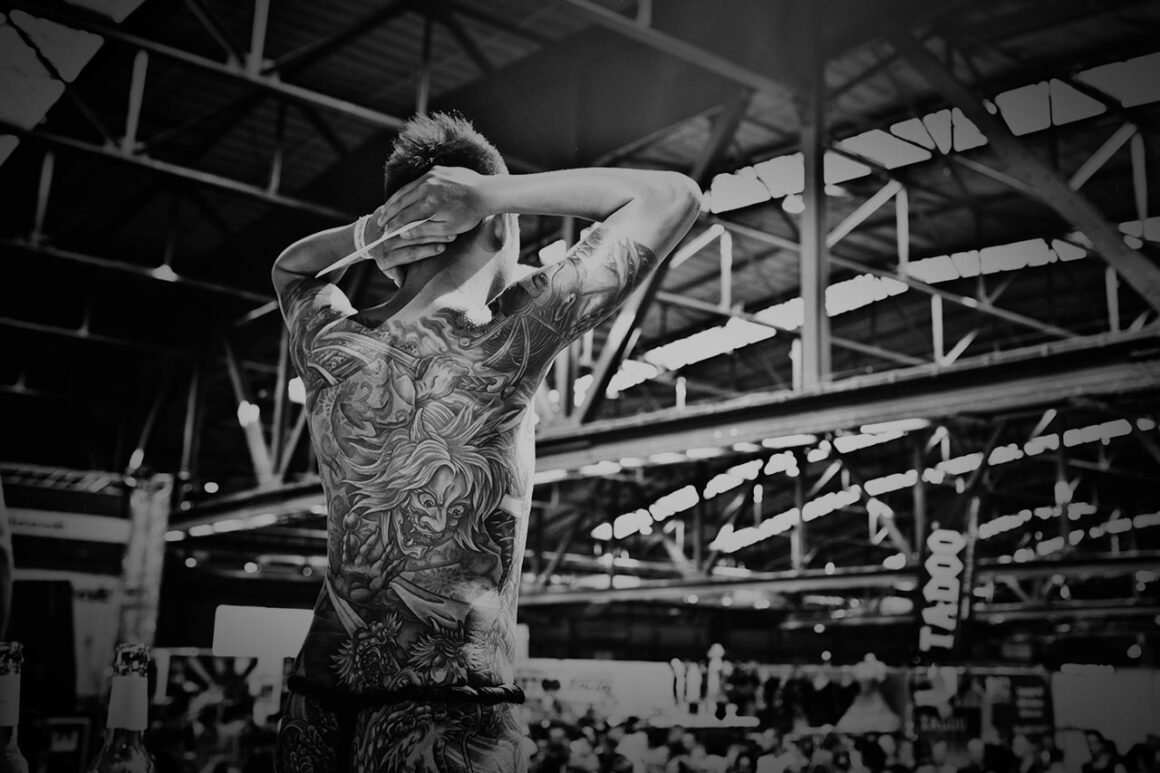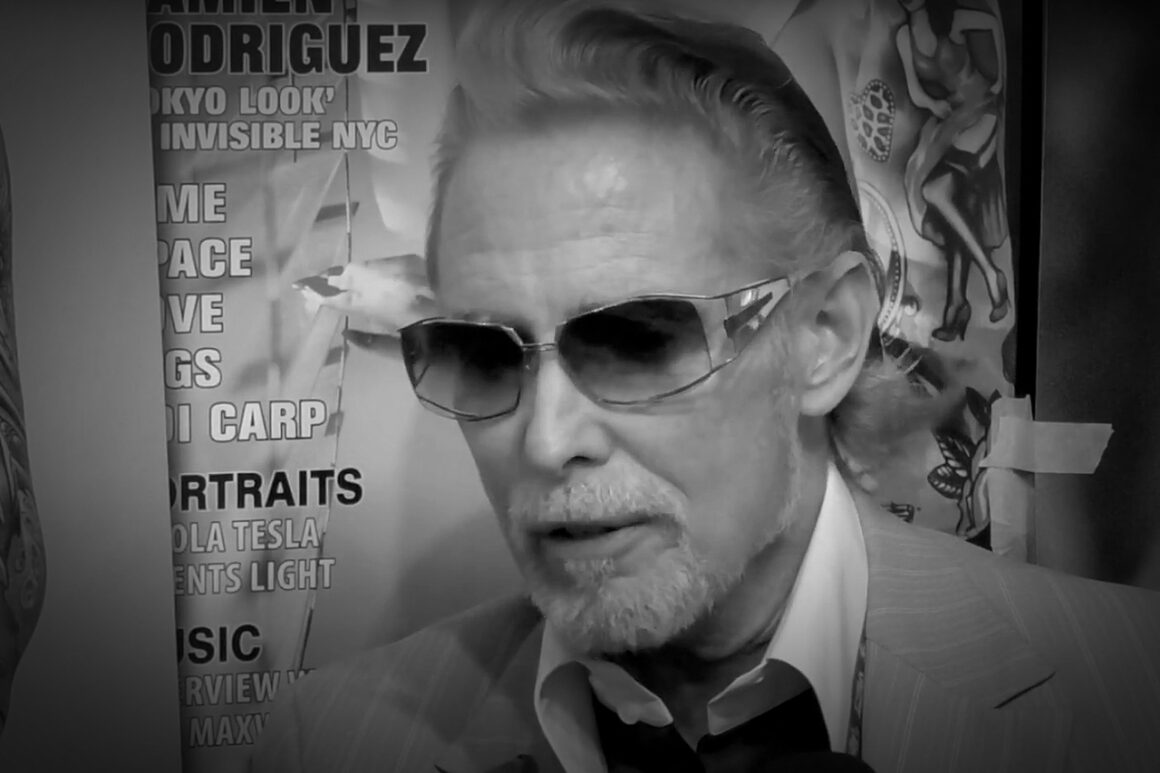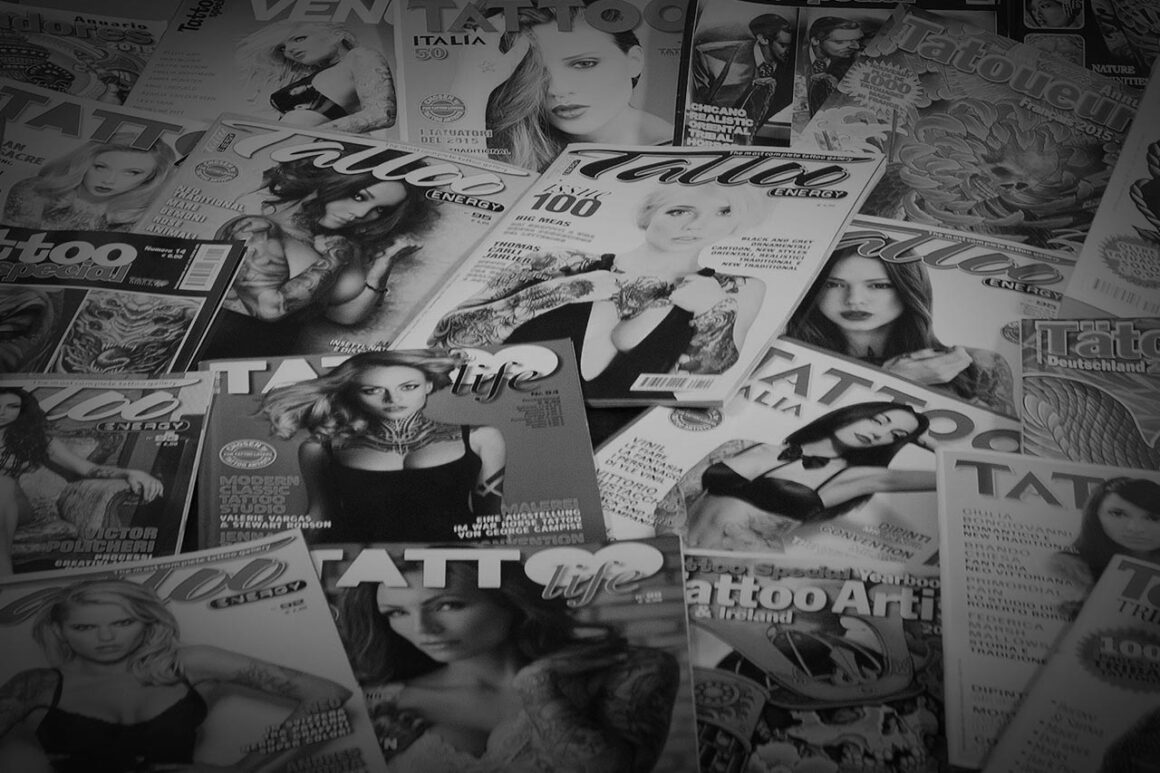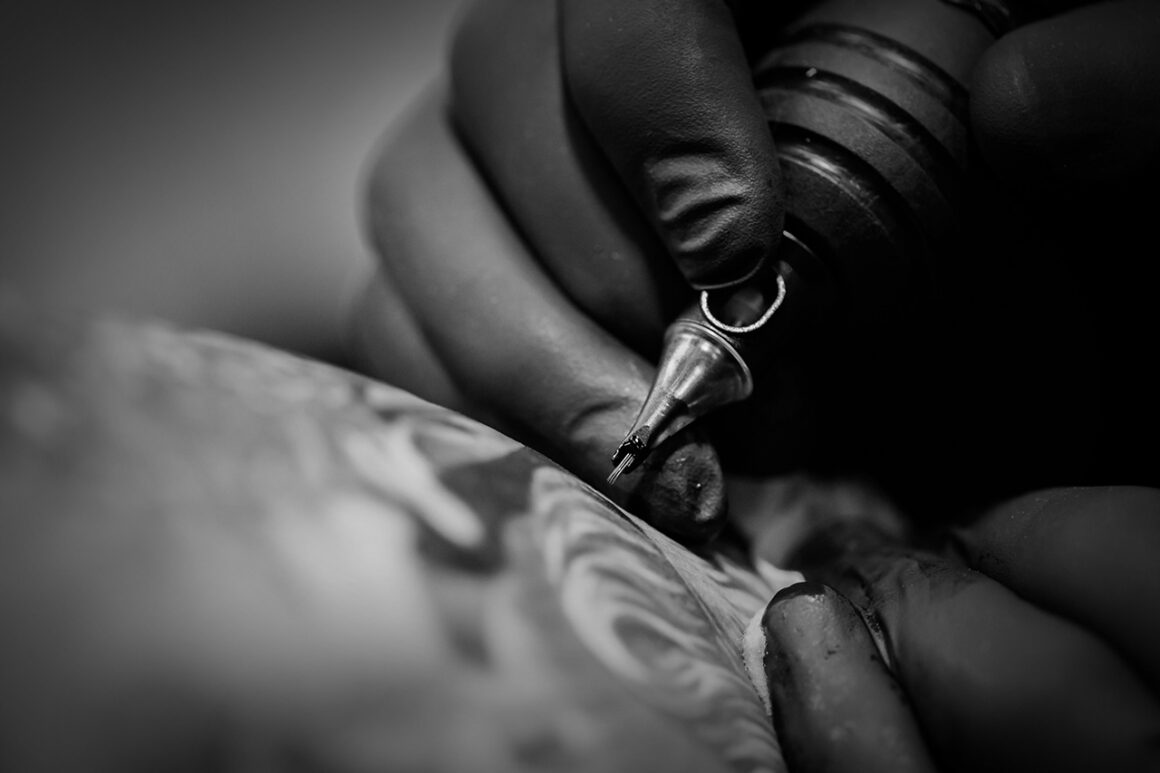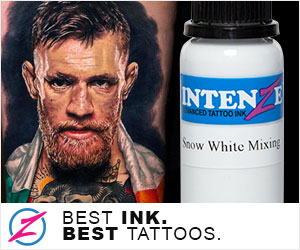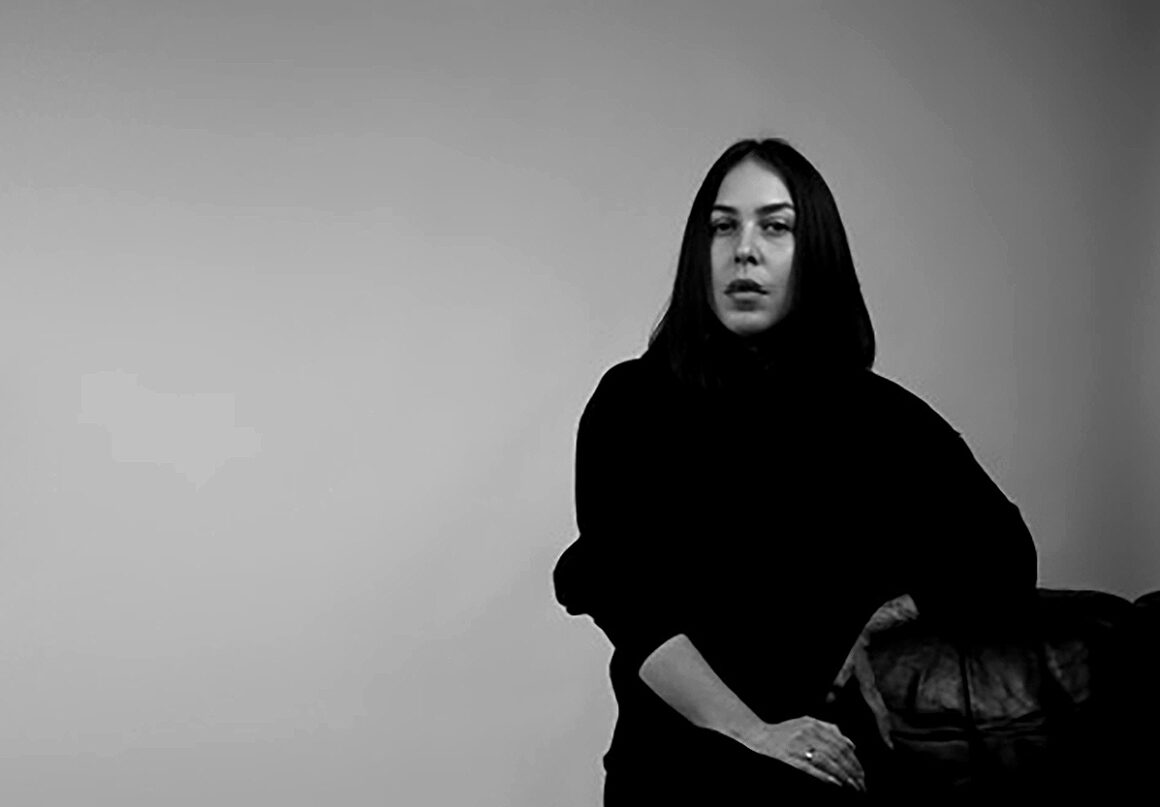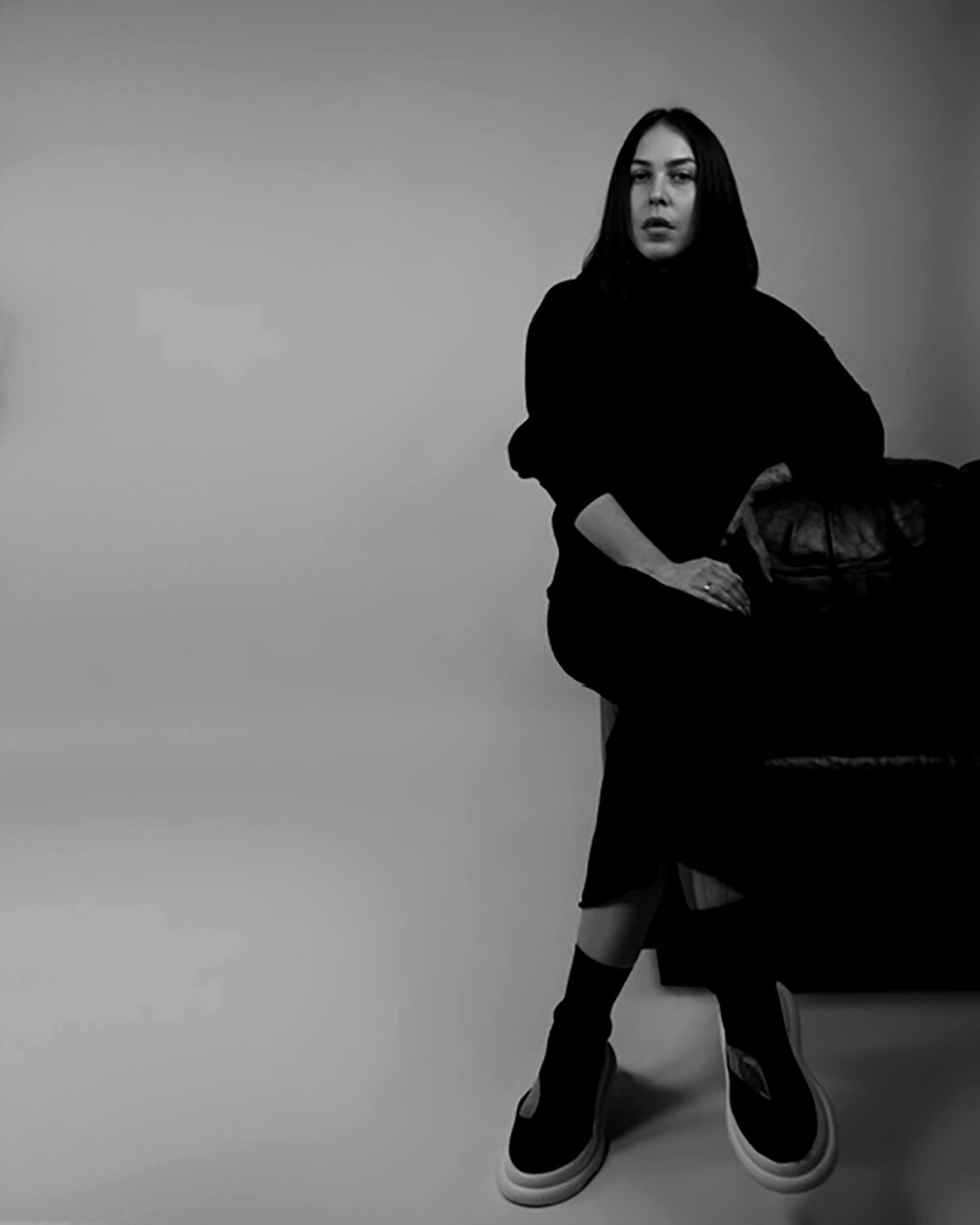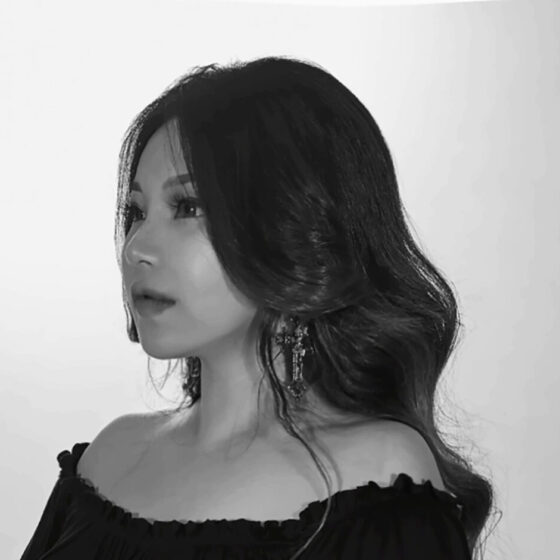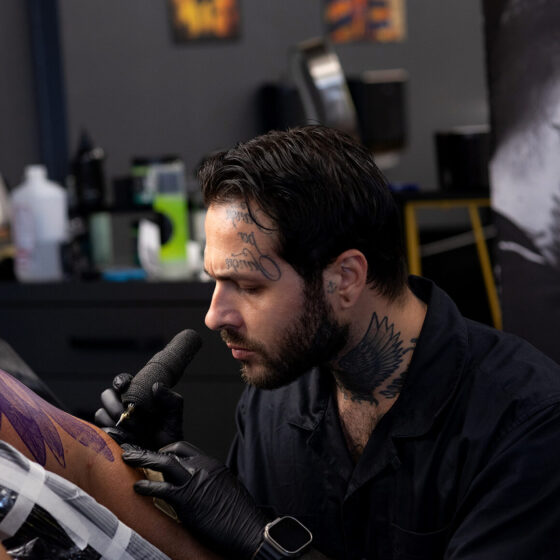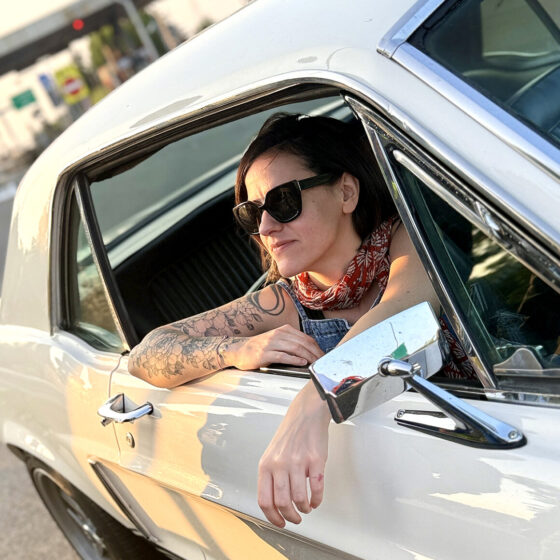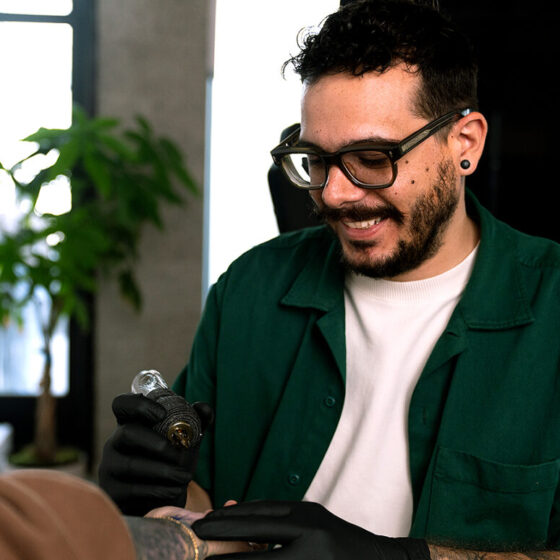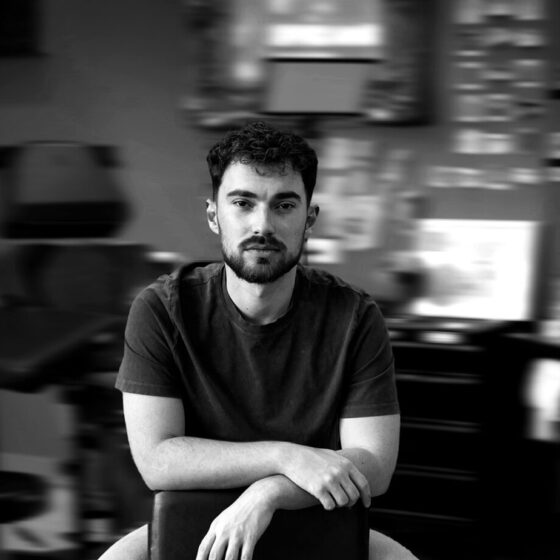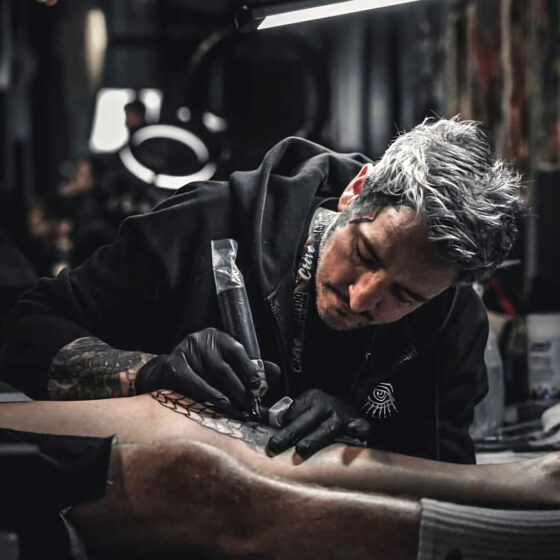Lena Burlai’s tattoos represent a perfect balance between a quiet force behind bold black work and the delicate symmetry of ornamental. An elegant fusion of structure and emotion that she uses to transform the human body into a moving and breathing canvas. We met here at her studio, NOA Tattoo Gallery, in Dortmund (Germany) where she lives and works. Lena tells us about her creative process, her inspirations, and the evolution of her signature style. From early fascination with patterns to her thoughtful approach to client collaboration
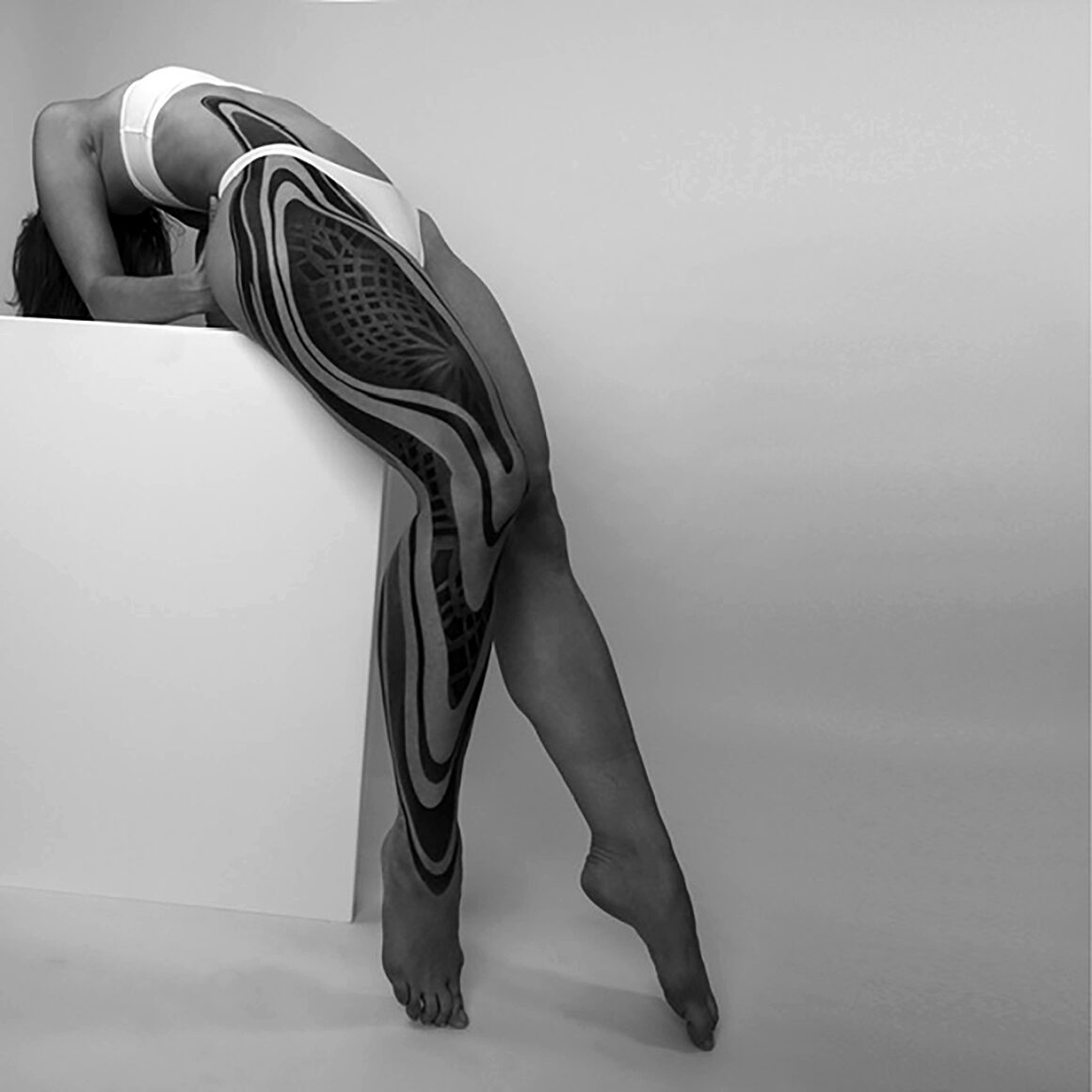
The idea of translating my artwork onto skin — turning the human body into a moving, breathing canvas — was incredibly powerful to me. It was more than just putting ink on skin; it was about creating something deeply personal, symbolic, and permanent. I’m drawn to the kind of design that feels timeless — the kind you find carved into old buildings, woven into fabric, or hidden in the details of everyday objects. But once I begin working on a design, I let intuition take the lead.

Lena welcome to Tattoo Life. Would you like to introduce yourself starting from the beginning? How did your journey into tattooing begin?
Thank you so much, it’s truly an honor to be part of Tattoo Life. My journey into tattooing began with an early and intense fascination with patterns and design. Even as a child, I was captivated by structure, repetition, and symmetry. I would often lose myself for hours sketching intricate abstract forms, ornamental borders, and decorative motifs. It was my way of understanding the world around me. Although I never attended a formal art school, my curiosity and love for ornamental art only grew stronger over time.
I spent years exploring various styles, always gravitating towards the elegance and timelessness of ornamental aesthetics.
Eventually, I found myself craving a more dynamic and personal medium, something that allowed me to interact with both art and people on a deeper level. Tattooing came into my life as a natural evolution of that desire. The idea of translating my artwork onto skin — turning the human body into a moving, breathing canvas — was incredibly powerful to me. It was more than just putting ink on skin; it was about creating something deeply personal, symbolic, and permanent. From the moment I held a tattoo machine, I knew I had found the path that truly resonated with me.
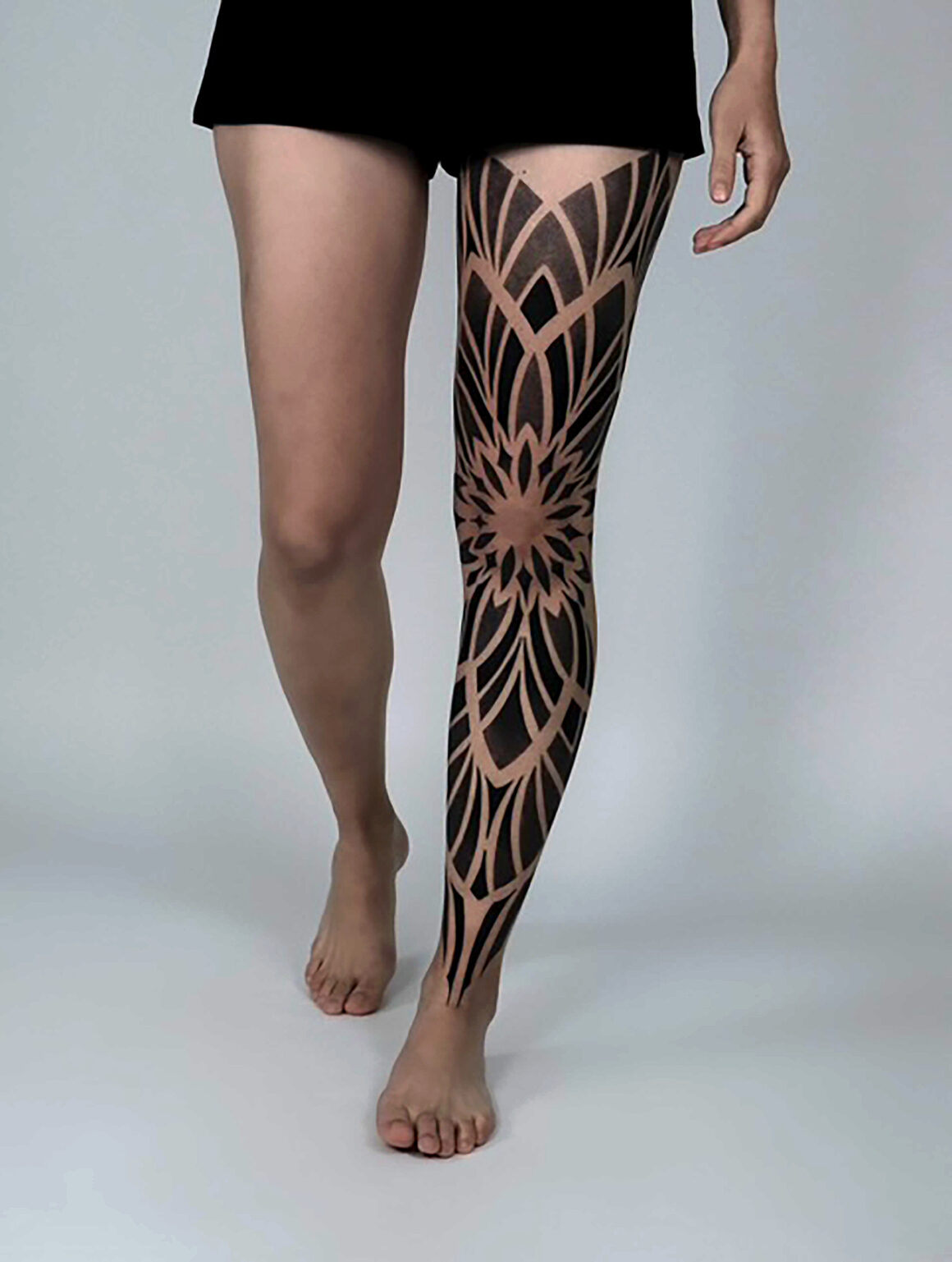
What drew you to black ornamental as your signature style?
Black ornamental felt like home from the moment I discovered it. There’s something timeless and meditative about working within that language of symmetry, flow, and contrast. I’m fascinated by the way ornamental motifs can simultaneously feel ancient and modern. They allow for both structure and expression, and the discipline of working in pure black ink forces me to be deliberate and intentional in every line.
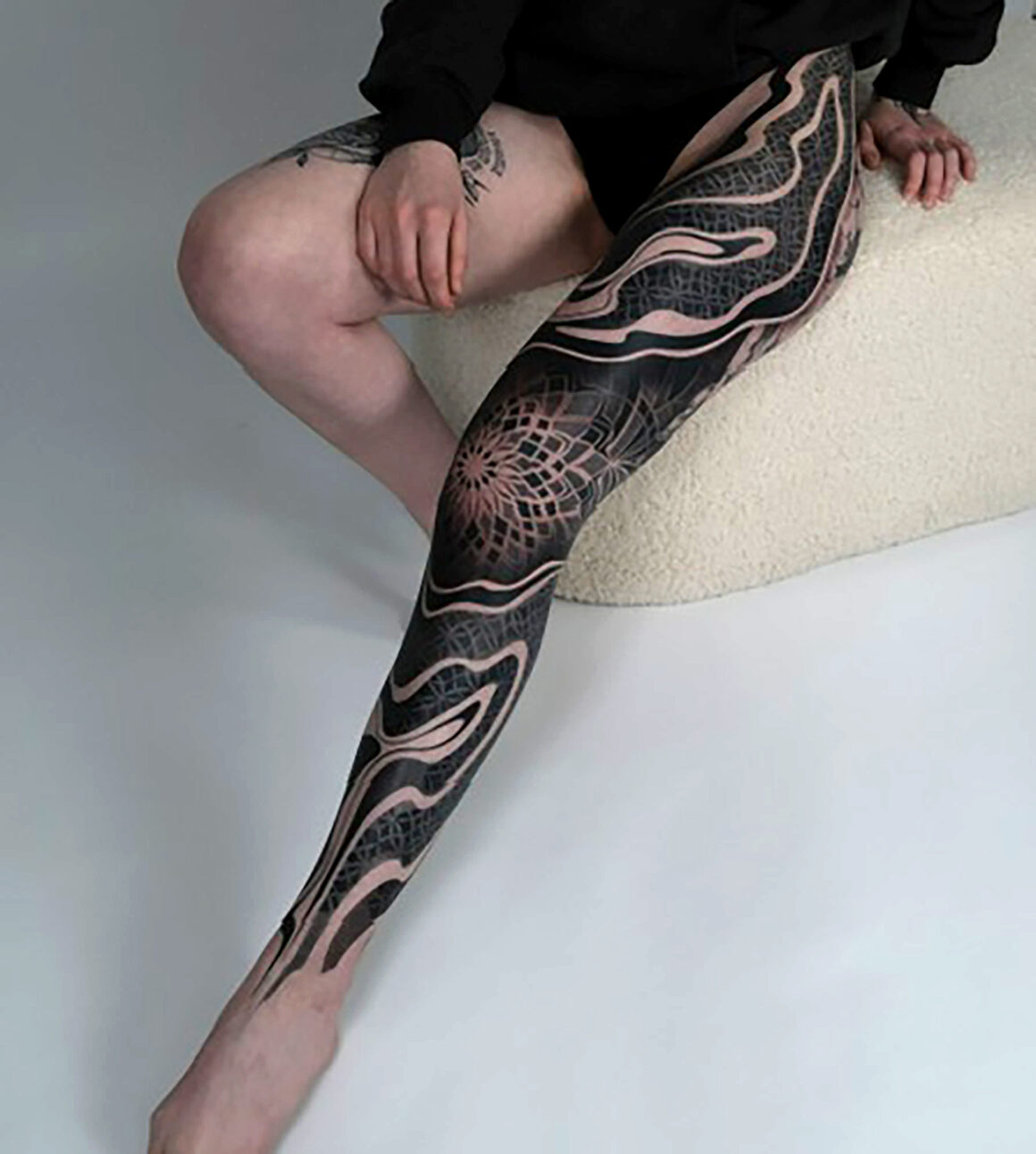
Your work is incredibly intricate and elegant. How would you describe your artistic approach to the black ornamental tradition?
Thank you. My approach blends classical ornamentation with a contemporary sense of abstraction. I’m not interested in copying patterns — I want to reinterpret and recompose them to fit each individual. For me, it’s about building harmony between the design and the person wearing it. I treat each tattoo as a composition — how it moves with the body, how it flows around bone structure, and how it reflects the client’s energy. I like to think of it as wearable architecture.

What are your main sources of inspiration? Are you drawn more to historical patterns, sacred geometry, or is it a more instinctive process for you?
It’s definitely a combination. I’m drawn to the kind of design that feels timeless — the kind you find carved into old buildings, woven into fabric, or hidden in the details of everyday objects. But once I begin working on a design, I let intuition take the lead.
Each tattoo is tailored to the client’s body and energy, so instinct plays a crucial role in how a piece evolves.
It’s a dialogue between structure and flow. I also find inspiration in rhythm — music, nature, movement — anything that suggests flow and structure.
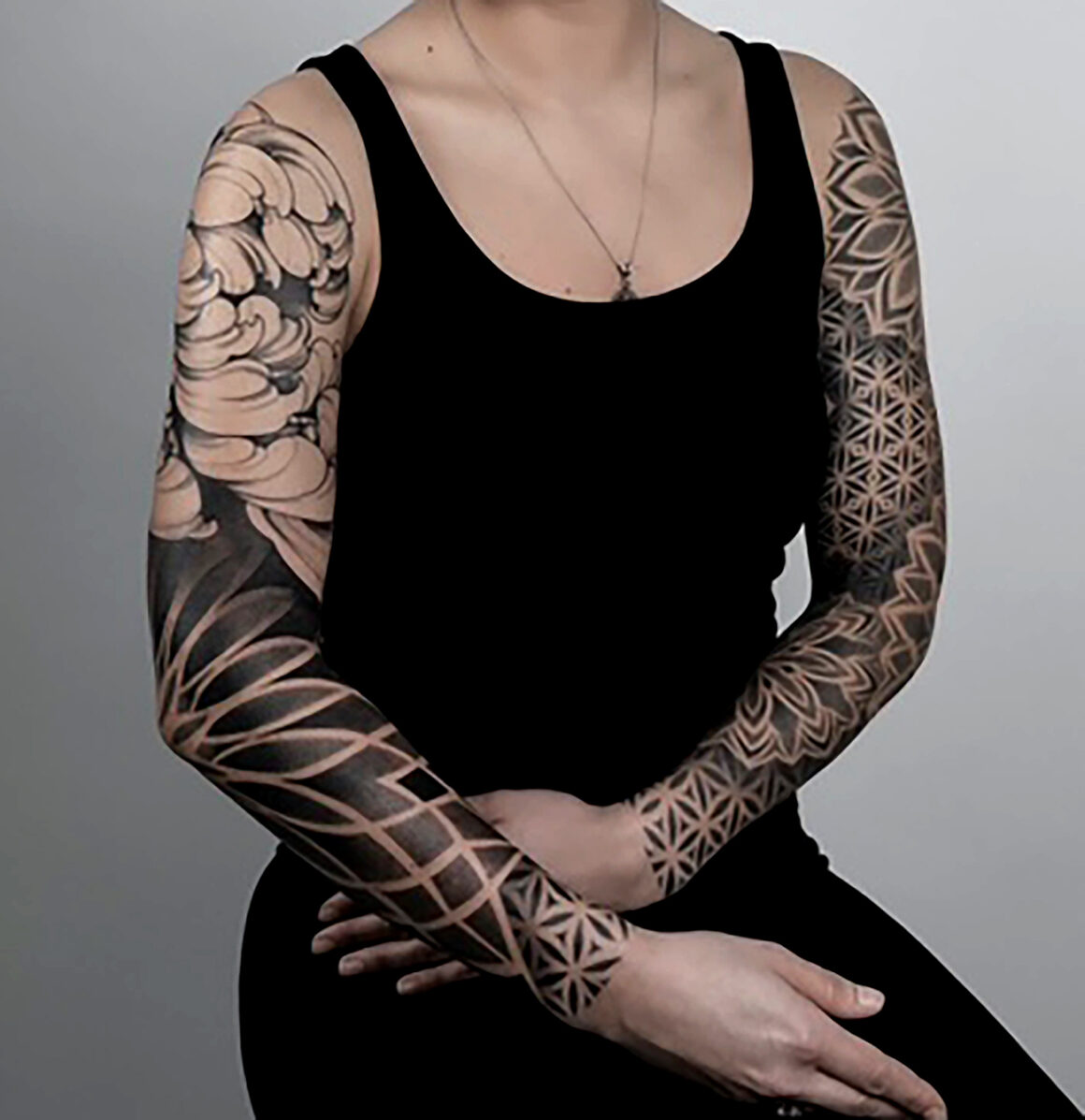
Black ornamental tattoos are often associated with balance, symmetry, and flow. How do you plan and design each piece to fit the body so harmoniously?
It starts with observation. I look closely at the client’s anatomy — the lines of the muscles, the curves, and the natural symmetry or asymmetry of their body. From there, I sketch directly on the skin or build digital mockups over body photos to understand how the design will move. I use symmetry as a base, but I never force it if the body calls for something more dynamic. The goal is always to enhance the natural form, not dominate it.
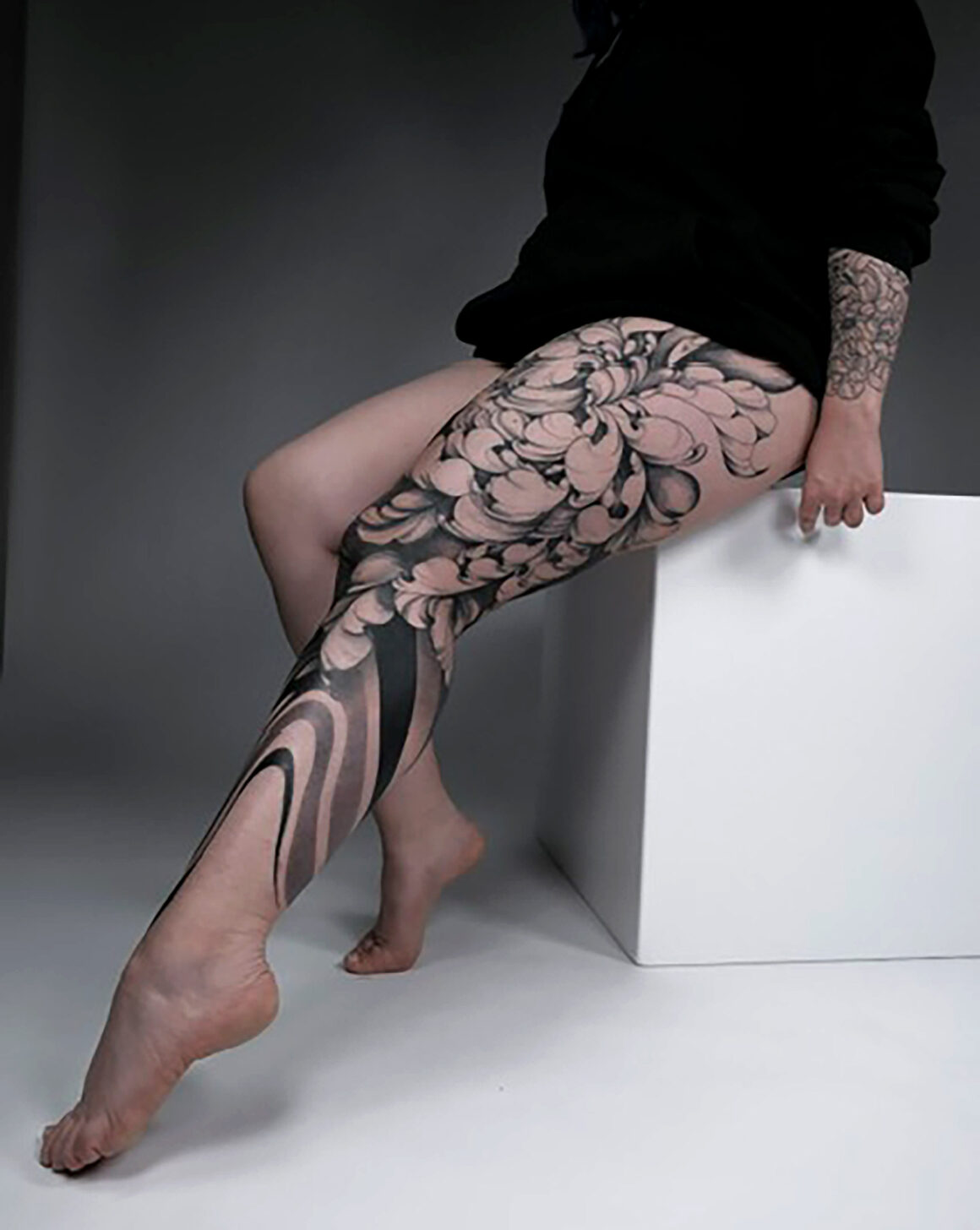
Do you see a spiritual or symbolic dimension in your designs? What kind of meaning do you aim to express — or help your clients express — through your work?
I tend to think of tattooing first and foremost as a form of visual art — a way to create something beautiful and intentional on the body. That said, everyone connects with tattoos differently. Some people come in with deep personal or symbolic meanings, and others just feel drawn to the design and how it flows with their form. I try not to define the meaning for them, but I do try to create space for whatever they bring into the process. If there’s a story, I’m there to help translate it into something visual — if not, art can still speak for itself in a powerful way.
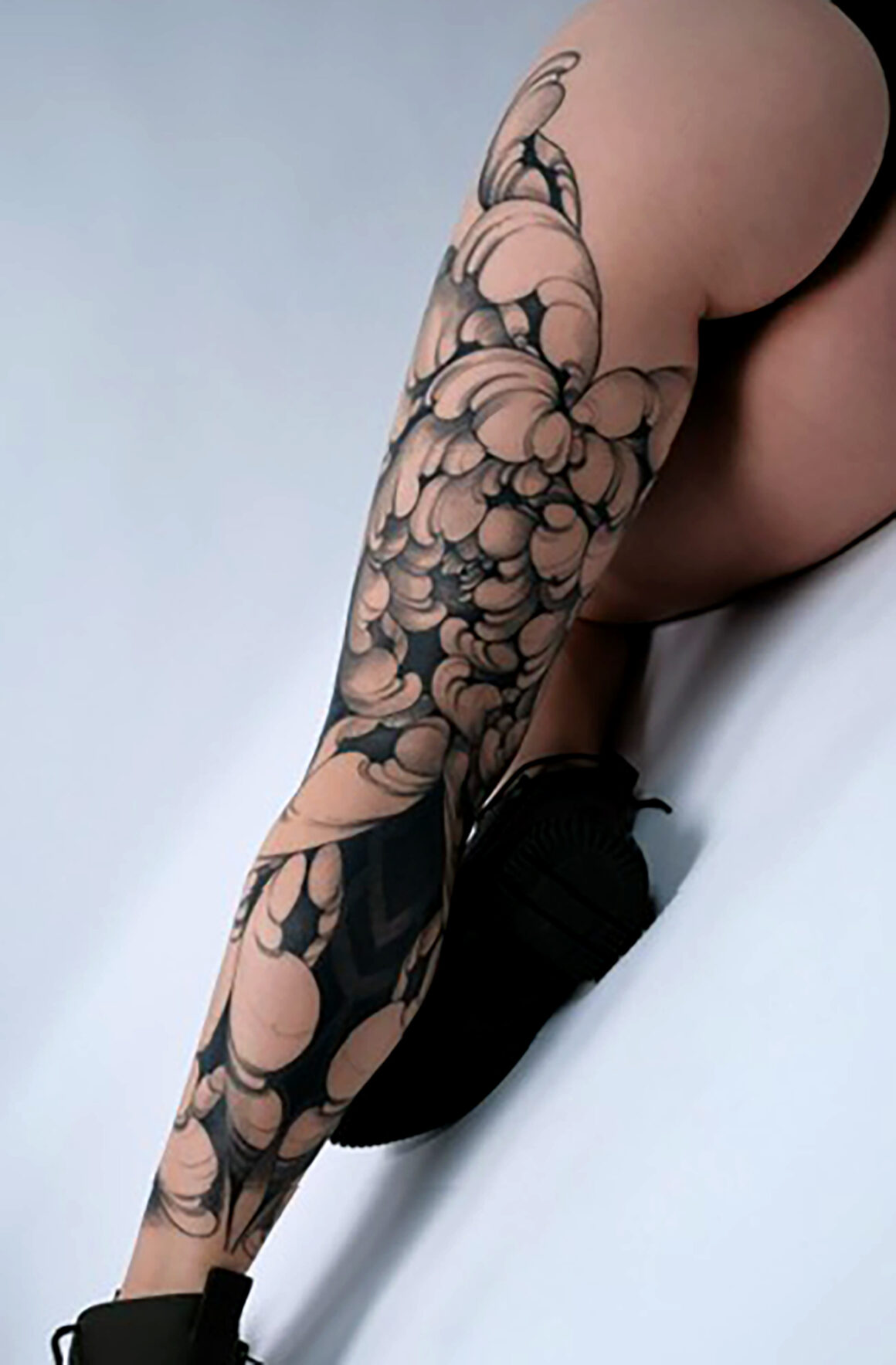
Can you bring us through your creative process — from the first contact with a client to the final tattoo and aftercare?
The process begins with a conversation. I want to understand the client’s vision, the placement they’re considering, and any references they’re drawn to. From there, I create a custom design tailored specifically to their anatomy and energy. Depending on the project, I might draw digitally or directly on the skin using freehand techniques. During the session, I focus not only on precision but also on the client’s comfort and mindset — it’s a shared experience. Aftercare is just as important — I make sure.
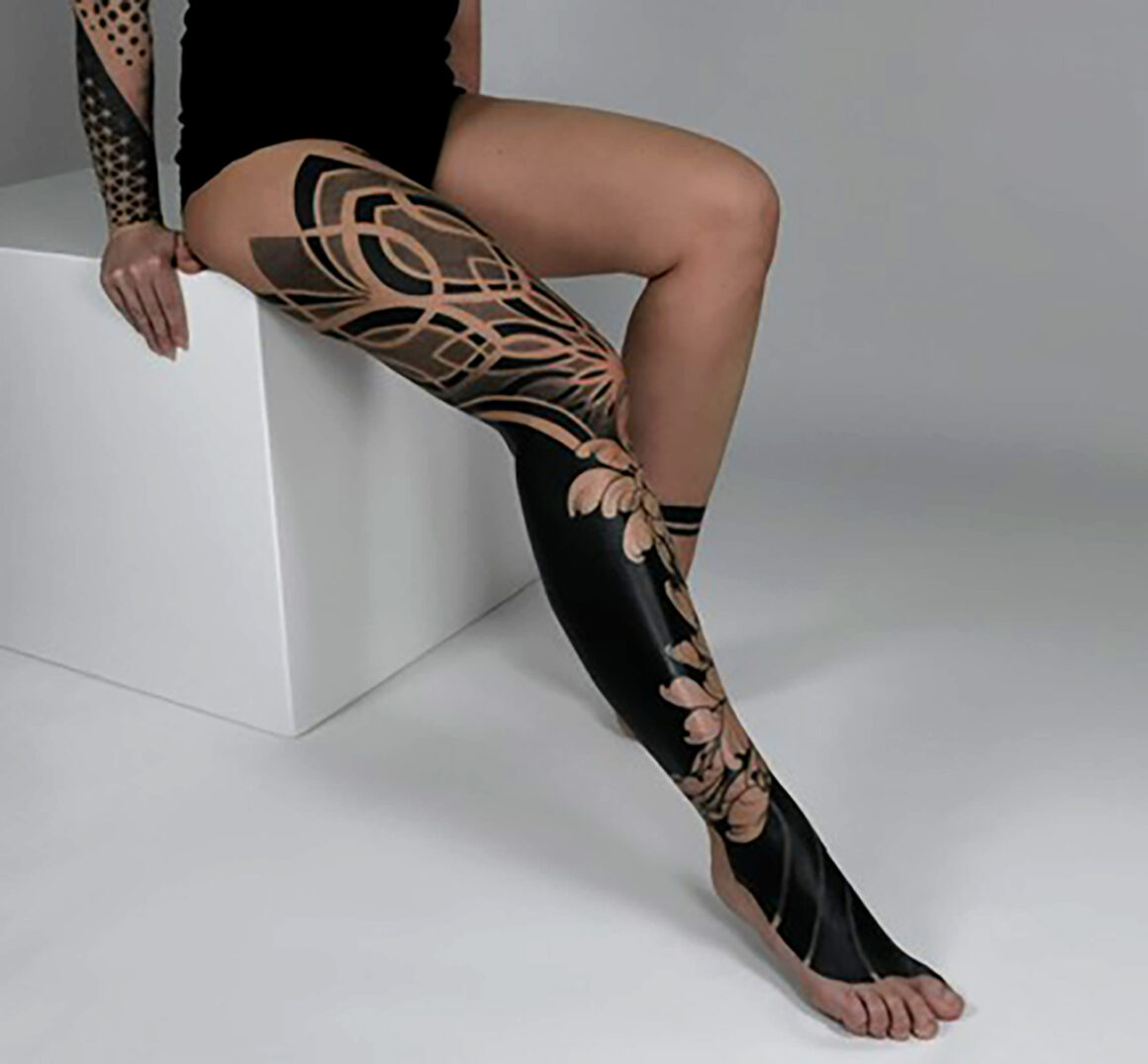
Do you work entirely freehand or start with precise stencils?
It depends on the project. For certain symmetrical or highly detailed pieces, I use stencils that I’ve designed digitally. But many of my works — especially when they involve wrapping around the body or flowing with its curves — are drawn freehand directly on the skin.
Freehand allows me to adapt in real-time and create a more organic relationship between design and body.
Blackwork is often seen as both minimalist and bold. How do you strike the balance between detail and visual impact?
That balance is everything. I always consider how a piece will age — too much detail in a small area can blur over time, so I space elements carefully and vary the weight of lines and negative space. I want my tattoos to be as readable from a distance as they are up close. It’s about creating texture and depth without overcrowding the composition.
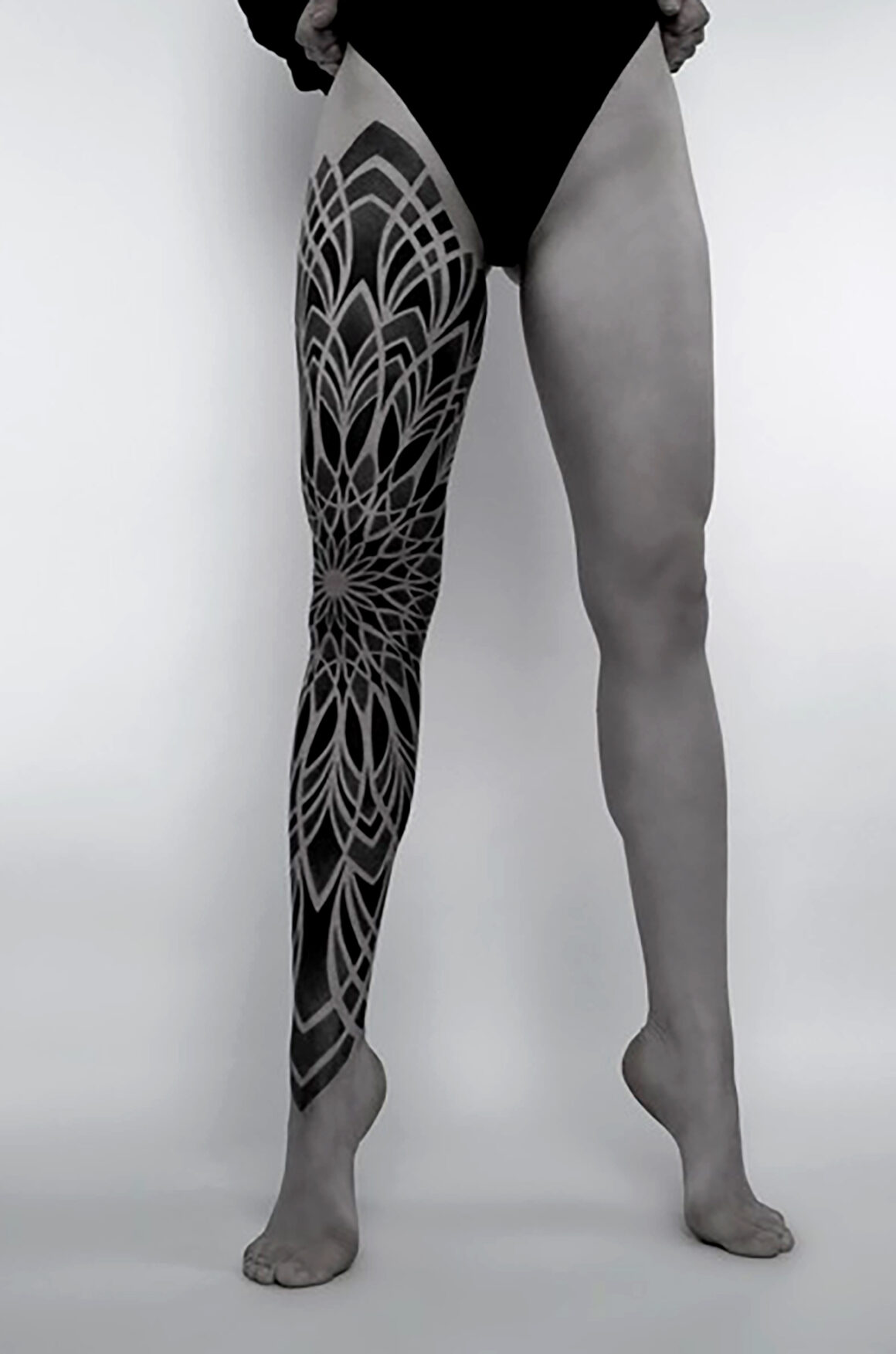
Last question, what’s next for you? Are there upcoming projects, collaborations, or conventions we should keep an eye out for?
Right now, I’m focused on developing new large-scale projects and evolving the ornamental style through both conceptual and technical. I’ll also be attending several conventions this year like Toronto tattoo convention, Ancona tattoo convention and Berlin tattoo convention, which are always a great source of inspiration and connection. In recent years, I’ve been honored to receive several awards at tattoo conventions, which have been a meaningful recognition of my artistic path. And this year marked a new milestone — I was a judge at Tattoocon in Dortmund. It was a great experience and one that deepened my respect for the craft even more. I’m also continuing to grow Noa Tattoo Gallery as a space where creativity and quality thrive.
